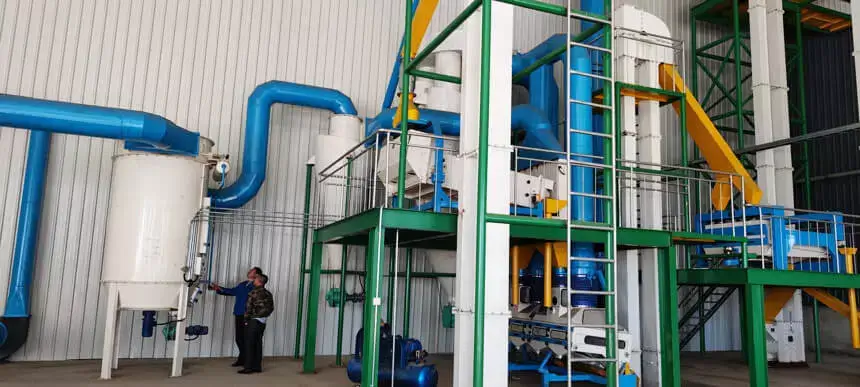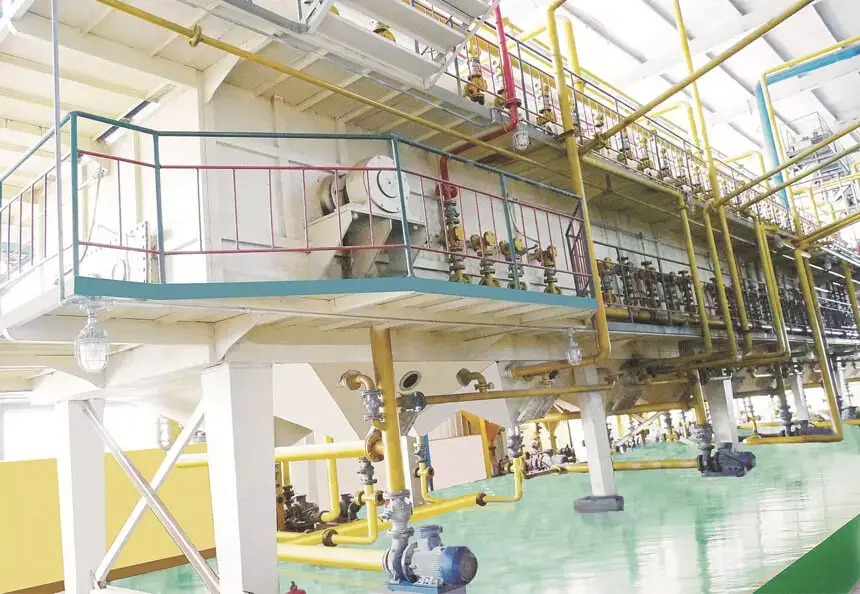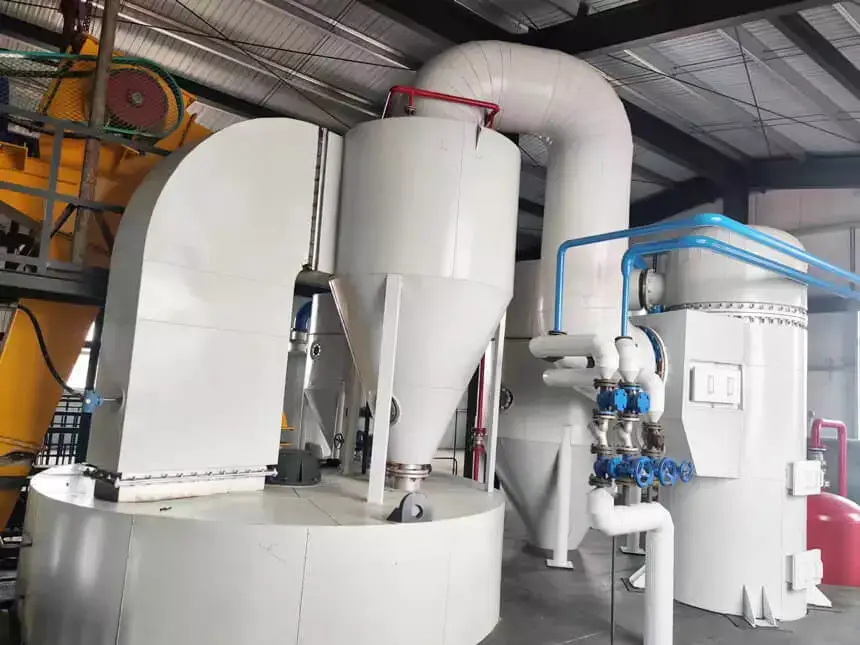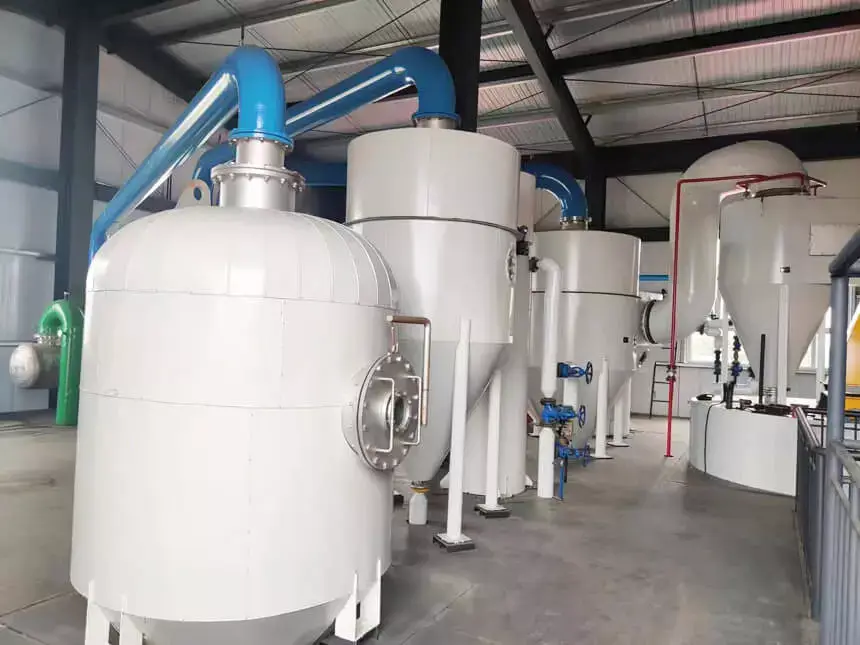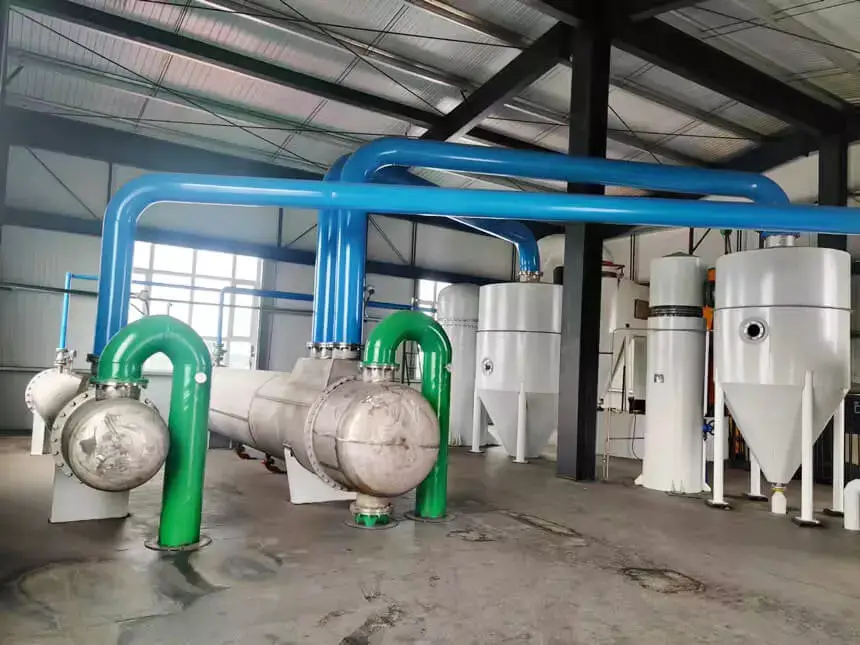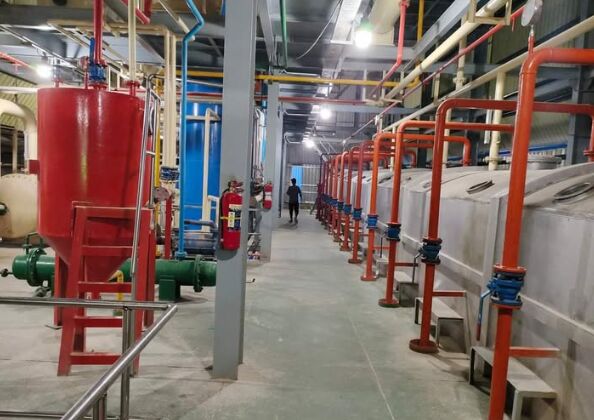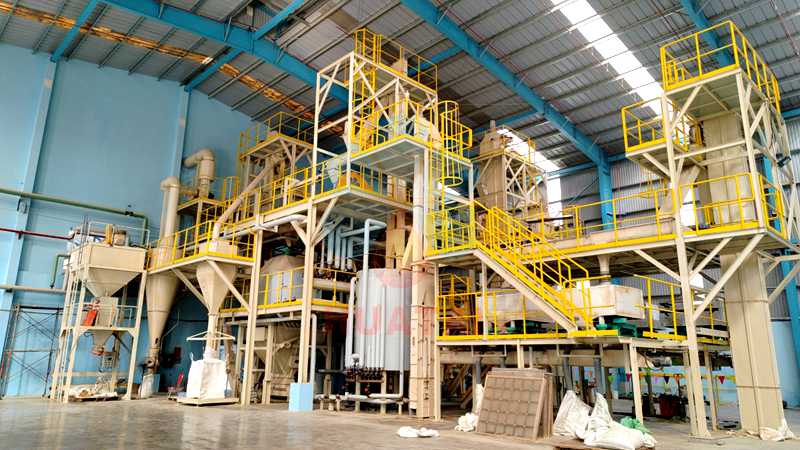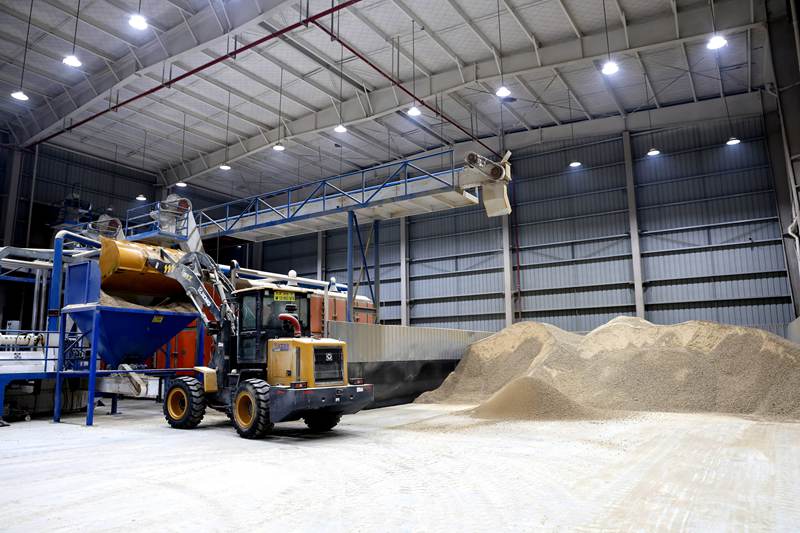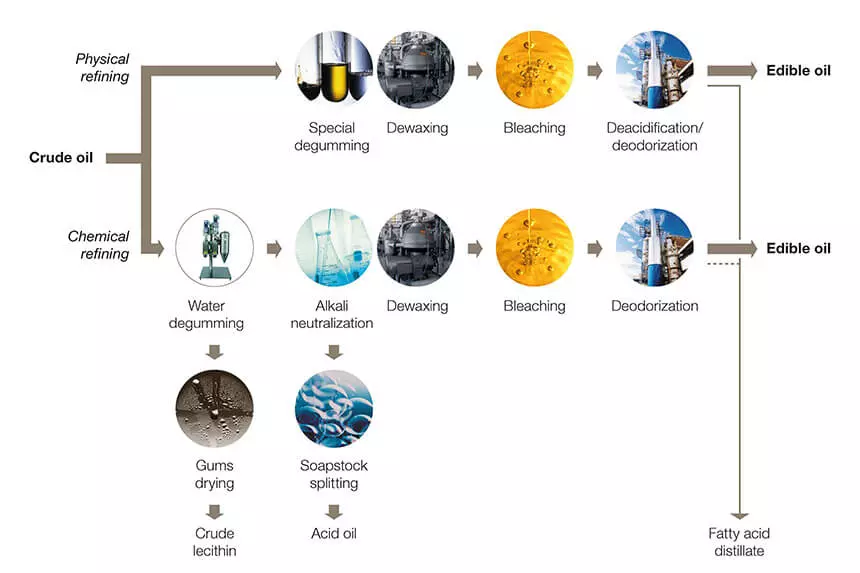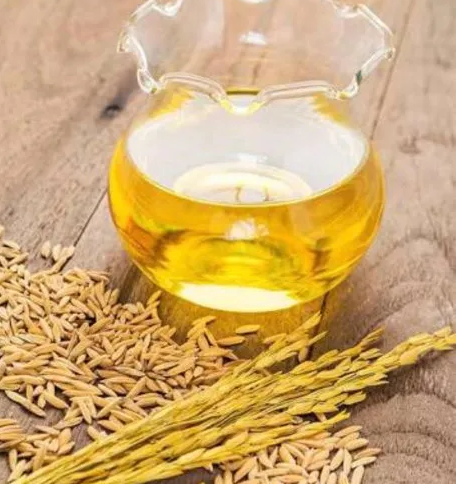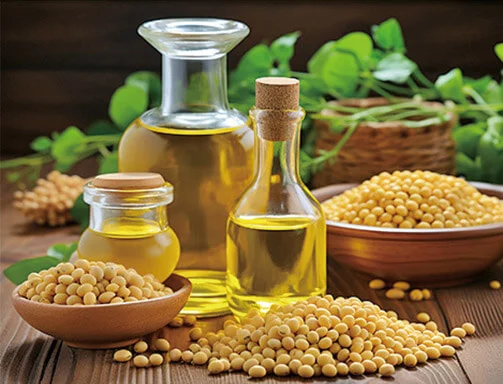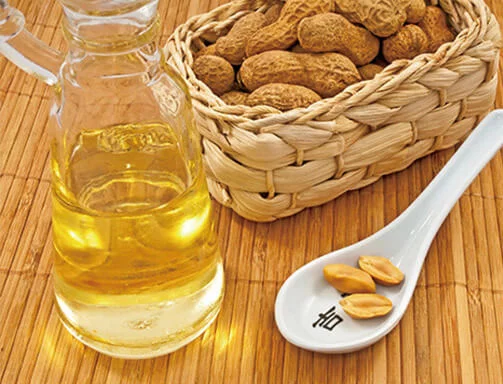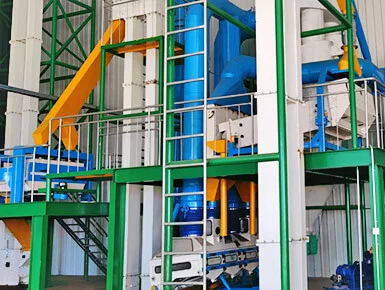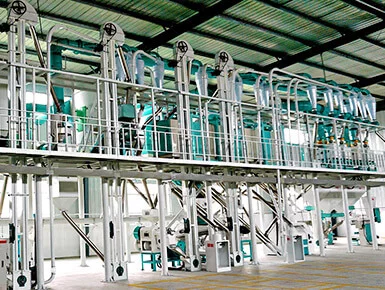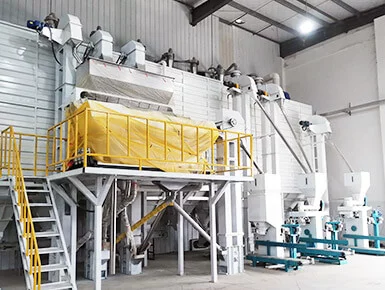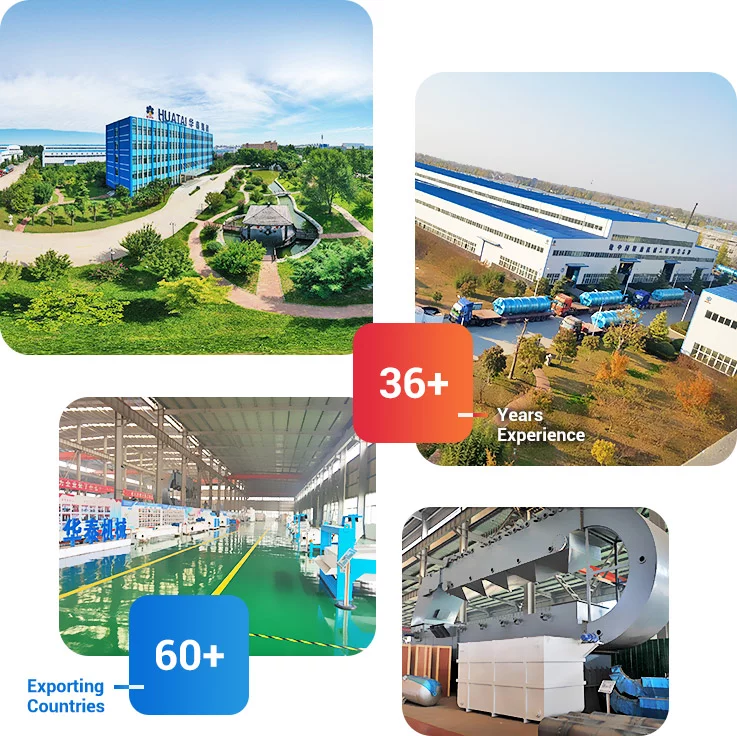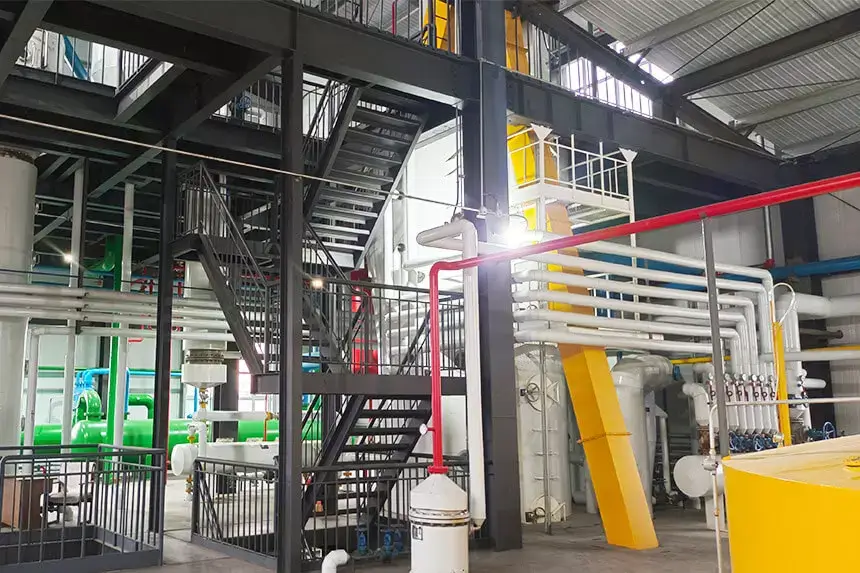
Introduction
Rice bran oil is a kind of high-quality edible oil, is extracted from rice bran, a by-product of rice milling. Because the oil content of rice bran is relatively low, adopt pressing method to extract rice bran oil, the residual oil rate of cake meal is 5%-8%. And using the solvent extraction method, the residual oil rate can be lower than 1%.
In this article, I will introduce the processing of rice bran oil solvent extraction plant in detail step by step. At present, almost all of the rice bran oil plants use rice bran oil solvent extraction process, high economic efficiency.
![Rice bran pretreatment]()
Step #1: Rice Bran Pretreatment
Because raw rice bran contains oil, fiber, and impurities like husk, dust, and broken rice. Without pretreatment, these impurities can reduce extraction efficiency and compromise oil quality.
Cleaning and Conditioning
Raw bran passes through a vibrating sieve and magnetic separator to remove coarse impurities, ensuring only pure bran enters the extraction system.
The cleaned bran then undergoes conditioning in a vertical stack cooker, where operators adjust moisture levels to 8–10% and elevate temperatures to 60–70°C.
This thermal treatment deactivates lipase enzymes that could otherwise degrade oil quality during storage.
Puffing and Drying
The conditioned bran is fed into an extruder or expander, where high-pressure mechanical shear and steam injection transform it into porous, granular pellets. This "puffing" step increases surface area by 300–400%, improving solvent penetration.
The expanded material is then dried to 3–5% moisture in a plate dryer, cooling it to 50–55°C to prevent solvent vaporization during extraction.
![Rice bran oil solvent extraction machine]()
Step #2: Rice Bran Oil Extraction
In the extractor, soak or spray the pretreated rice bran with hexane. The solvent penetrates the bran, dissolving the oil to form a mixture called miscella (a combination of oil and solvent). (Read more about: rice bran oil extraction process >>)
Henan Huatai Group Three Types Extractors
- Rotocel extractor: A rotating carousel divided into cells that percolate solvent through bran beds.
- Loop type extractor: A continuous loop conveyor that immerses bran in a countercurrent solvent flow.
- Drag chain extractor: A drag-chain system moves bran through successive solvent baths.
All three extractors operate on countercurrent principles, with solvent meeting nearly exhausted bran and concentrated miscella (oil-solvent mix) contacting new bran. This approach achieves residual oil levels below 1% in spent meal.
![Rice bran wet meal desolventization]()
Step #3: Wet Meal Desolventization
After oil solvent extraction, the wet meal needs desolventization to remove residual hexane and prepare the meal for further use. This step is vital not only for recovering the solvent but also for producing a safe, high-quality meal that can be used as animal feed or fertilizer.
Feed the wet meal into a desolventizer-toaster (DT), steam heats the meal to 100–120°C. The heat vaporizes the hexane, separating it from the meal. The process also toasts the meal, enhancing its nutritional value.
Advanced DTDC units achieve <300 ppm residual solvent in meal while improving protein digestibility through controlled denaturation.
![Mixed oil evaporation and stripping]()
Step #4: Mixed Oil Evaporation and Stripping
The miscella from extraction contains 20–30% oil in hexane. A multi-stage evaporation system concentrates this to 95–98% oil content.
Two-Stage Evaporation
First Effect: Pump the miscella into evaporators, utilizing waste heat from DTDC vapors (70–80°C) under vacuum (-0.06 MPa) to concentrate miscella to 60–70% oil.
Second Effect: High-pressure steam (0.4–0.5 MPa) further concentrates oil to 90–95%.
Solvent Stripping
Final traces of hexane (<0.05%) are removed in a stripping column using direct steam injection (105–110°C) under vacuum (-0.08 MPa). The resulting crude oil flows to refining, while recovery stripped solvent.
By controlling evaporation and stripping, produce rice bran oil that is safe, pure, and ready for refining or direct use.
![Rice bran solvent cooling and recycling]()
Step #5: Solvent Cooling and Recycling
After desolventization and stripping, the vaporized hexane is collected, cooled, and recycled for reuse in the extraction process. An efficient rice bran oil solvent extraction plant recovers 99.5% of hexane, keeping operational costs low and environmental impact minimal.
Recovery Process Flow
- Condensation: All solvent-laden vapors pass through condensers cooled to 5–10°C.
- Decantation: Condensed hexane-water mixture separates in a gravity tank (hexane density: 0.66 g/cm³ vs. water’s 1.0 g/cm³).
- Absorption: Residual vapors undergo mineral oil scrubbing, capturing 99.9% of fugitive solvent.
- Storage and Recovery: The recovered liquid hexane is stored in sealed tanks to prevent losses and contamination.
Modern plants achieve hexane consumption as low as 1.5–2.5 liters per ton of bran processed, compared to 5–8 liters in older systems. If you want to upgrade your old rice bran oil solvent extraction system, you can also feel free to consult us.
Conclusion
The rice bran oil solvent extraction plant can efficiently extract rice bran oil from rice bran, which can be very cost-effective in terms of high yield, high quality and sustainable operation.
Huatai Intelligent Equipment Group as a leading rice bran oil machine manufacturer, whether you want to build a new rice bran oil solvent extraction plant, or a complete rice bran oil production line, feel free to consult us. Henan Huatai Group can provide rice bran oil processing plant turnkey project, high quality products and the most perfect service.
Frequently Asked Questions
What is the solvent extraction of rice bran?
Solvent extraction of rice bran uses a solvent, typically hexane, to dissolve and separate oil from rice bran. This efficient method extracts oil from the bran, a rice milling byproduct, and is commonly used industrially for high oil recovery.
How much oil can be extracted from rice bran?
Rice bran contains about 15-20% oil by weight. With solvent extraction, up to 95% of this oil can be recovered. The exact amount varies depending on bran quality and extraction technology.
How much oil can be extracted from 1 kg of rice bran?
From 1 kg of bran, 150–230 grams of oil is theoretically possible (15–23% oil content). Real-world extraction recovers 130–220 grams (85–95% efficiency). High-yield plants using puffing and hexane achieve up to 190–200 grams per kg.
What is the capacity of a rice bran oil solvent extraction plant?
Huatai Intelligent Equipment Group's rice bran oil solvent extraction plant production capacity is 30-1000 tons. Capacity depends on extractor type (Rotocel, loop, or drag chain) and solvent recovery efficiency.
![]() Service Coverage
Service Coverage
![]() FAQ
FAQ


